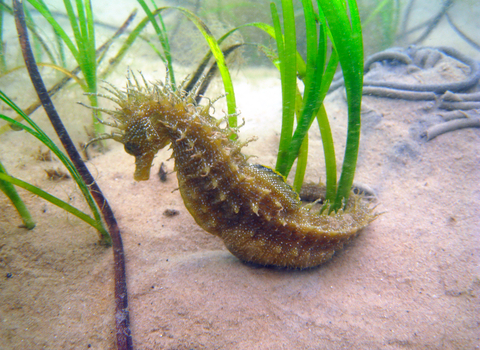
Spiny seahorse in seagrass ©Julie Hatcher
Long-snouted seahorse
One of 2 seahorses found in UK seas, long snouted seahorses are recognisable by their longer snout and fleshy "mane".
Scientific name
Hippocampus guttulatusWhen to see
January to DecemberSpecies information
Statistics
Length: 21cmThe long snouted seahorse is currently unlisted on the IUCN Red List due to deficient data (DD), but was previously listed as Vunerable (VU). In the UK, it is a Priority Species under the UK Post-2010 Biodiversity Framework and protected under the Wildlife and Countryside Act 1981. They are a Feature of Conservation Importance for which Marine Conservation Zones can be designated.
